Philippine Cocoa: From Cold to Hot (Demands, Areas and Volume of Production)

Filipinos have long enjoyed chocolate drinks from cocoa beans. They were, in fact, the first to do so in Asia. This is not surprising since the country was the first in Asia to plant cacao trees, from which cocoa beans are harvested.
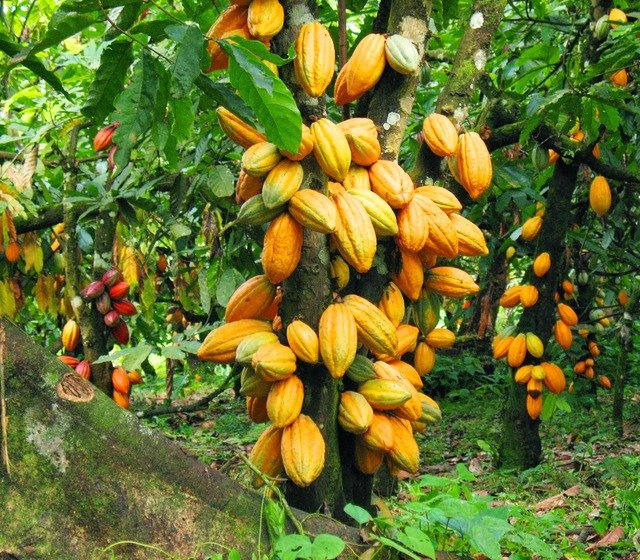
The Spaniards introduced the cacao tree in the Philippines sometime in 1670. But it was only in the mid-1950's when commercial cacao farms were put up in the country. About a decade later, the production of cocoa beans expanded into a local industry. This was the period in the 1960's when a group of Filipino businessmen put up processing facilities and more commercial farms were established in Mindanao.
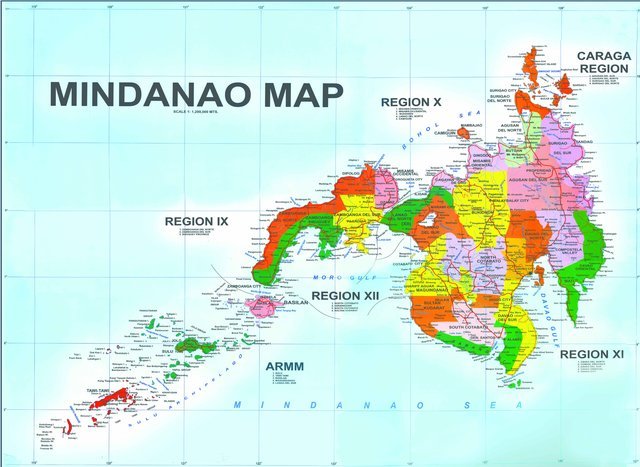
The local cocoa industry started to take off in the mid-1980's when more investments were poured into commercial farms and grinding facilities. Its take-off, however was interrupted in the next decade. The government's Comprehensive Agrarian Reform Program (CARP), whose implementation started in 1992, broke up the cacao plantations in Mindanao into small farms, which were then distributed to small farmers.

(Davao del Sur, Cacao Farm)
Farmers who got parcels of land under CARP failed to maintain their cacao trees. As the result, the total area planted to cacao went down to 14,956 hectares in 1998 and 11,525 hectares in 2002. This went down further to 9,985 hectares in 2007.
During that year, Mindanao accounted for 8,283 hectares or 82.95 percent of the total area planted to cacao. However, the total are planted to cacao in Mindanao decreased to 7,830.82 hectares in 2009 and 7,413.00 hectares in 2013. Among the regions, Davao (Region XI) accounted for 70 percent of the total area planted to cacao in Mindanao.
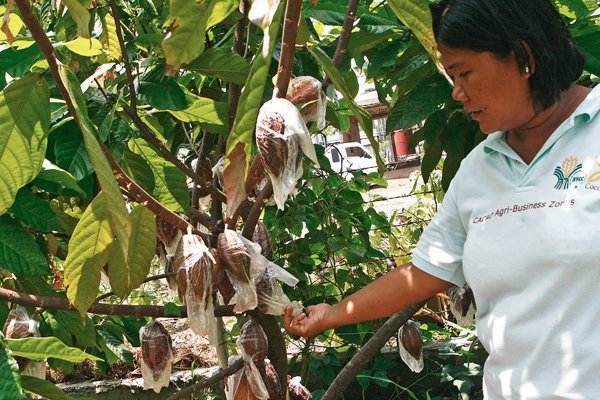
(Marilyn Carubio, Technical Adviser of the Cocoa Foundation of the Philippines' Cacao Agribusiness Zone)
Also in 2013, Philippines cocoa bean production was at 4,831 metric tons (MT), with Mindanao accounting for 90 percent or 4,366.52 MT. Mindanao's production in 2013 decreased slightly by four percent over 2009 figures. Except for Davao and SOCCSKSARGEN (Region XII), production volume in all Mindano regions was lower in 2013 compared to 2009.
Of the 4,366.52 MT of cacao beans produced in Mindanao in 2013, 88 percent came from Davao. Northern Mindanao (Region X) had the second highest production, although it was only equivalent to about five percent of Davao's production.
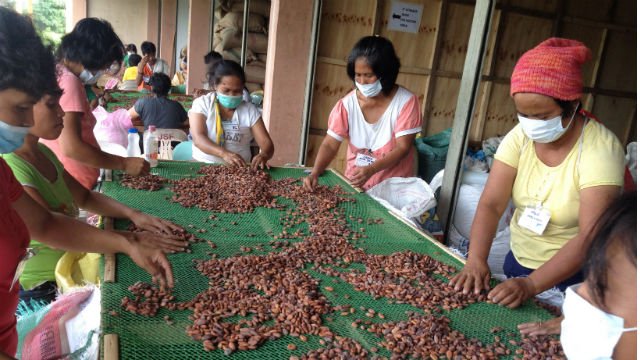
(Cacao Worker's in Davao)
Today cocoa beans are once again a hot commodity as there is an increasing demand for them in the country and abroad. Cocoa producing countries are unable to fulfill the growing demand for cocoa products worldwide, especially chocolate. The Philippines itself is a net importer of cocoa products, with annaul consumption equivalent to 50,000 MT of dried cocoa beans.

Factors for growing demand of cacao
According to DA, the following are some of the factors that are contributing to the increasing worldwide demand for cocoa:
– increasing awareness for health benefits of, and preference for, chocolate (and there is no substitute to cacao in chocolate making)
– expanding range of applications in food, beverage, cosmetics and pharmaceuticals
– increasing disposable income of middle class
Philippine Food with cocoa powder
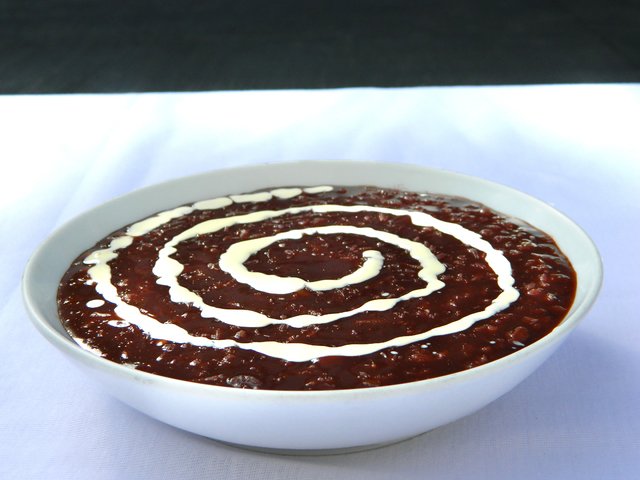
(Champorado)

(Choco Truffles)

(Filipino Hot Chocolate - Tsokolate)

(Brownies Cake)
By 2020, the Philippine chocolate industry's projected demand is expected to reach an estimated 100,000 MT of dried cocoa beans, which would translate to 50-70 million trees and 120-150 thousand hectares of land. In the world market, demand for cocoa beans is projected to reach 4.7 million to 5.0 million MT in 2020, with average annual deficit of 100,000 MT.
With these trends, the Philippines cocoa industry with Mindanao in the lead is targeting to produce 100,000 MT of cocoa beans per year starting in 2020. This target is contained in the memorandum of agreement (MOA) signed by the Department of Agriculture (DA) and the Mindanao Development Authority (MinDA) on July 31, 2015, to collaboratively enable Mindanao to rise up to the Cacao 2020 challenge.
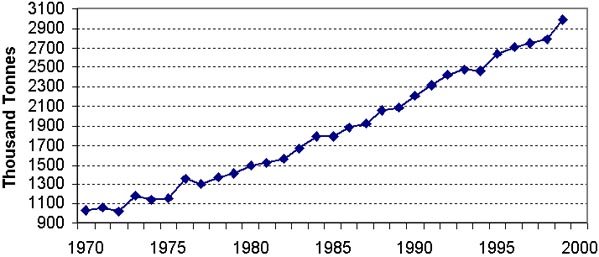
The MOA mandates the DA and MinDA to carry out policies and action plans that will double the land areas planted to cacao, thereby increasing production and income of cacao farmers and stakeholders. The two agencies will look into the expansion and improvement of production to increase productivity. Training support as well as postharvest and research and development assistance will also be provided.
Likewise, the DA will assist cacao farmers in various value adding activities, like teaching them how to become entrepreneurs. It will also export market opportunities to sustain a competitive and viable industry.
So, with fingers crossed, it might not be long before Philippine cocoa becomes a hot commodity in the world market.
Image Source: 0 | 1 | 2 | 3 | 4 | 5 | 6 | 7 | 8 | 9 | 10 | 11 |
Site Source:
http://www.cidami.org/philippine-2020-challenge/
http://www.da.gov.ph/ (Department of Agriculture - DA)
http://www.dti.gov.ph/ (Department of Trade and Industry - DTI)
https://psa.gov.ph/ (Philippine Statistics Authority - PSA)
Follow me @lapilipinas
Very nice! great post! looks soooo good :)